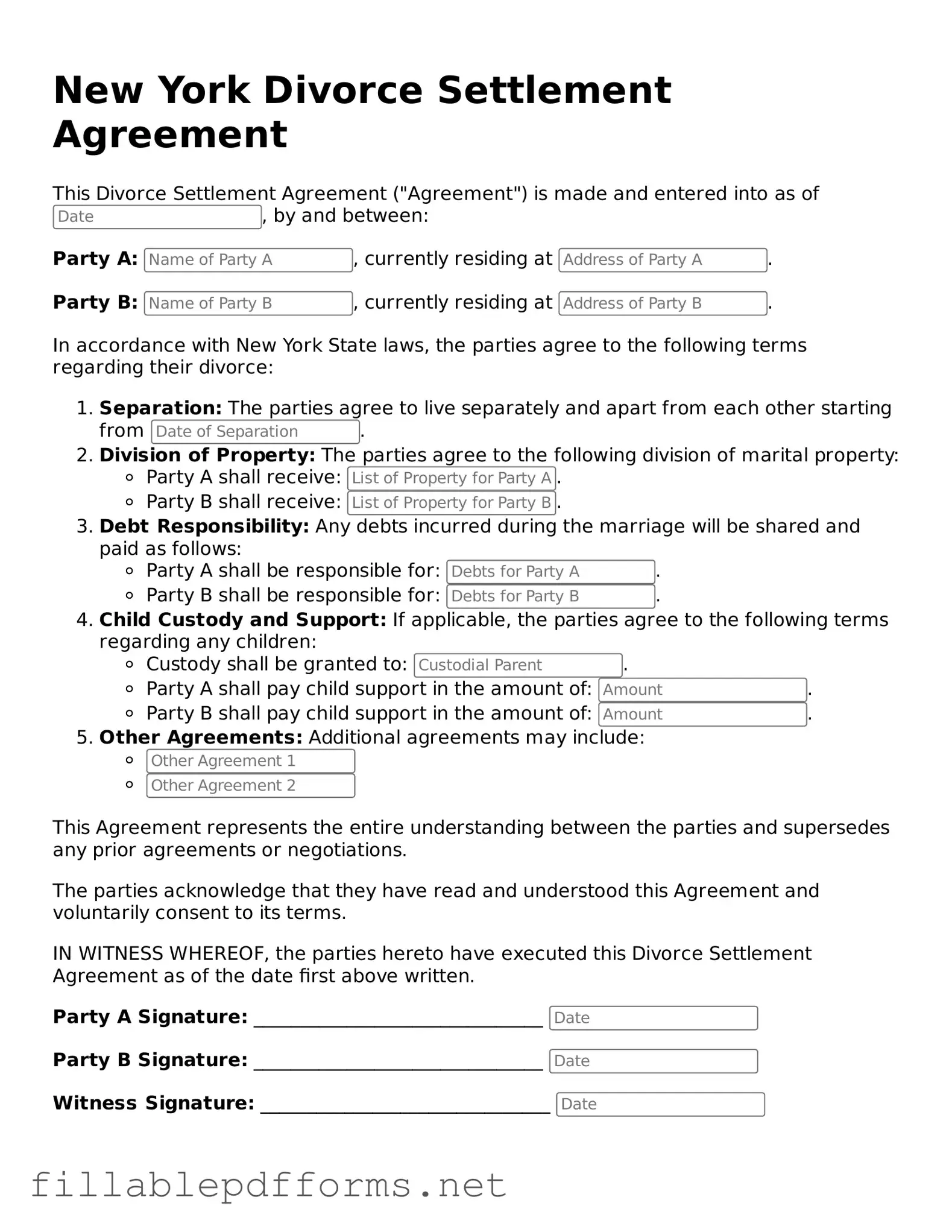Attorney-Verified Divorce Settlement Agreement Form for New York State
The New York Divorce Settlement Agreement form is a legal document that outlines the terms agreed upon by both parties during a divorce. This form addresses various aspects such as asset division, child custody, and support obligations, ensuring that both individuals have a clear understanding of their responsibilities. By formalizing these agreements, the form helps to facilitate a smoother transition for families navigating the divorce process.
Launch Editor Here
